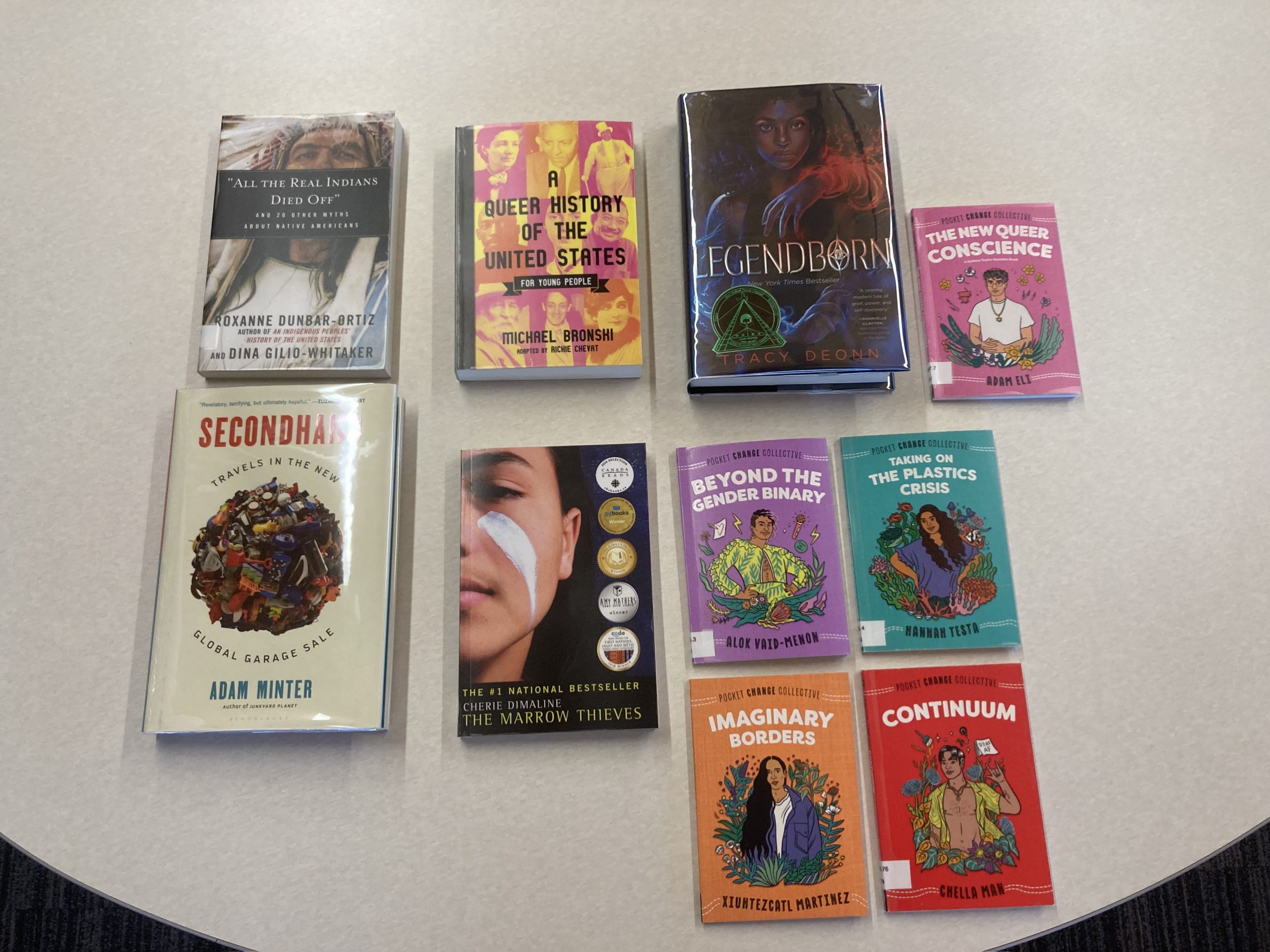Challenging censorship one book at a time
By Sutton Archambault, Reporter

Throughout the world, many books are considered inappropriate for a teen audience, whether they have offensive language or are too sexually explicit. This opinion often leads to books being banned in schools for various reasons—such as thinking that children reading books with queer characters will turn them gay.
An example of a book that has been banned in school districts in some states in the U.S.—for example, Texas—is “Gender Queer” by Maia Kobabe. This book was banned for its alleged sexually explicit nature and illustrations. Though patterns show that books are banned for handling self-identity, sexuality, gender identity, and racism. Leila Rafei from ACLU highlighted censorship towards targeted groups.
“Schools are removing books by and about LGBTQ people, BIPOC, and other marginalized groups from curriculums and libraries at an unprecedented rate,” Rafei said.
However, the Vashon Island High School library draws a stark contrast to many school libraries across the United States, as Washington, King County, and VHS admin permit the display of many books other schools have banned.
VHS librarian, Vanessa Gannon has been choosing new books for the library, many of which coincidentally have been on the banned books lists. The books she has chosen touch on topics such as climate change and sustainability, indigenous stories and authors, and LGBTQ+ authors and topics. Some examples of some of the new favorites include: “All the Real Indians Died Off and 20 other myths about Native Americans” by Roxanne Dunbar-Ortiz and Dina Gilio-Whitaker, “A Queer History of the United States for Young People” by Michael Bronski, and “Secondhand: Travels in the New Global Garage Sale” by Adam Minter.
Though, since some of these books have been banned, there seems to be more interest in them. Students here have been checking out the books that sometimes wouldn’t be seen on other bookshelves.
“In a way, [censorship gives] some more attention, just like any press is good press,” Gannon said.
VHS is unique in many ways. One example is that the school library has minimal pressure or push backs in choosing library books.
The library has gone through changes with the intention of keeping the space one that feels open and welcoming for every student. One of the changes is getting more BIPOC, neurodiverse and genderqueer books. Gannon’s work has been one of the biggest changes in the library because of her determination to make the school library a better and safer place for all students.
“The library seems to be a safe place where people who are neurodiverse, [BIPOC], [and] gender diverse tend to hang out. And I hope that it helps them feel welcomed here,” Gannon said.
However, none of this would be possible without the funding to make it so, and one of the biggest financial supporters of the VHS library is Partners in Education or PIE. PIE is a local, non-profit charity organization that provides grants to schools to raise the quality of education in both public and private schools. PIE gave a grant to the VHS school library to help pay for the new books in the library. The new library books were ordered through Vashon Bookshop to support the local Vashon community by shopping small.
“[I try to] keep the PIE Grant funds that were donated by our community in the community,” Gannon said.
Gannon selected these books with the hope of continuing to make the VHS library a safe place.
“[The books] help people feel represented in the library by seeing reflections of themselves, or just by learning about people different [from] yourself. And being accepting of that,” Gannon said.
